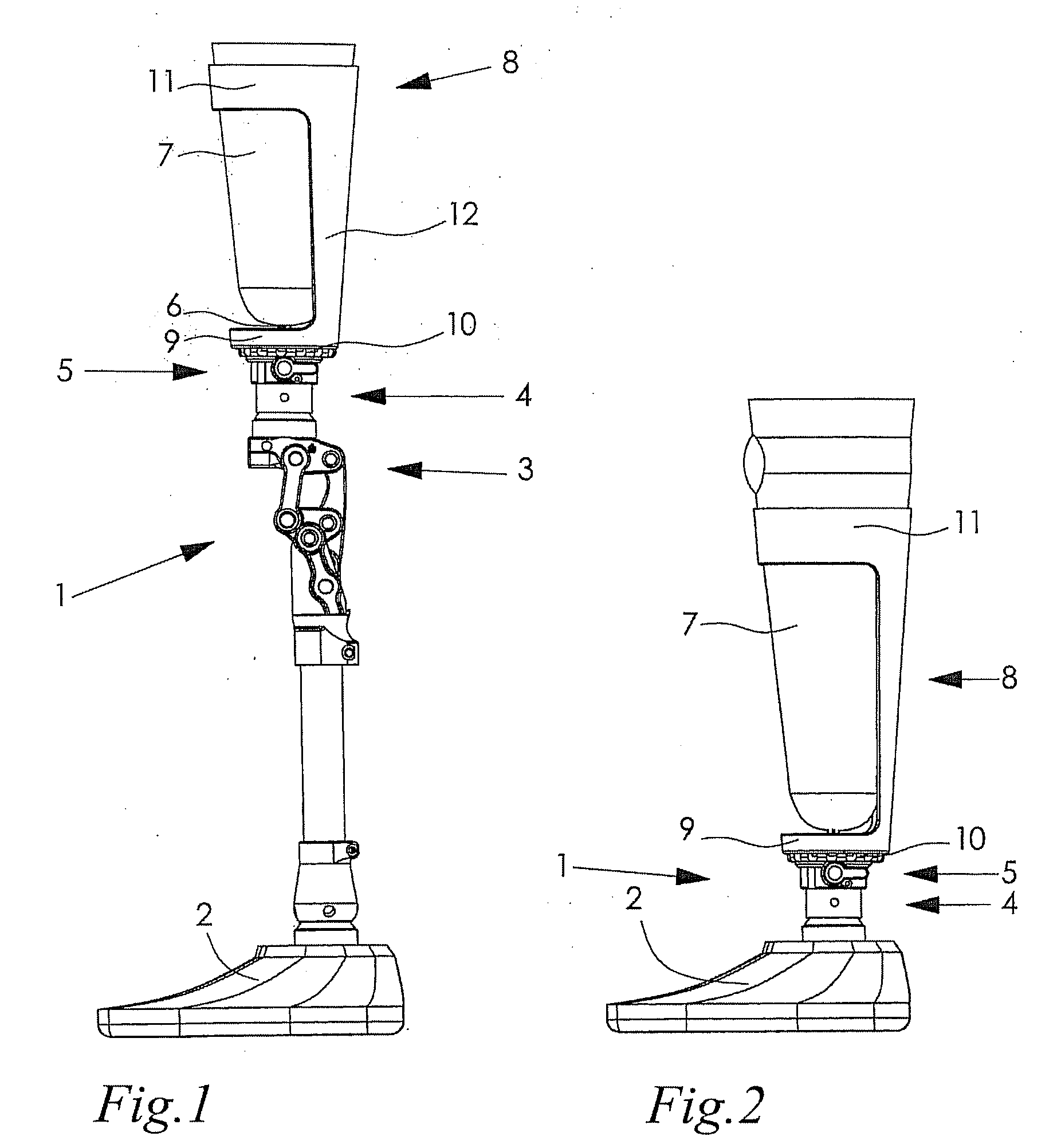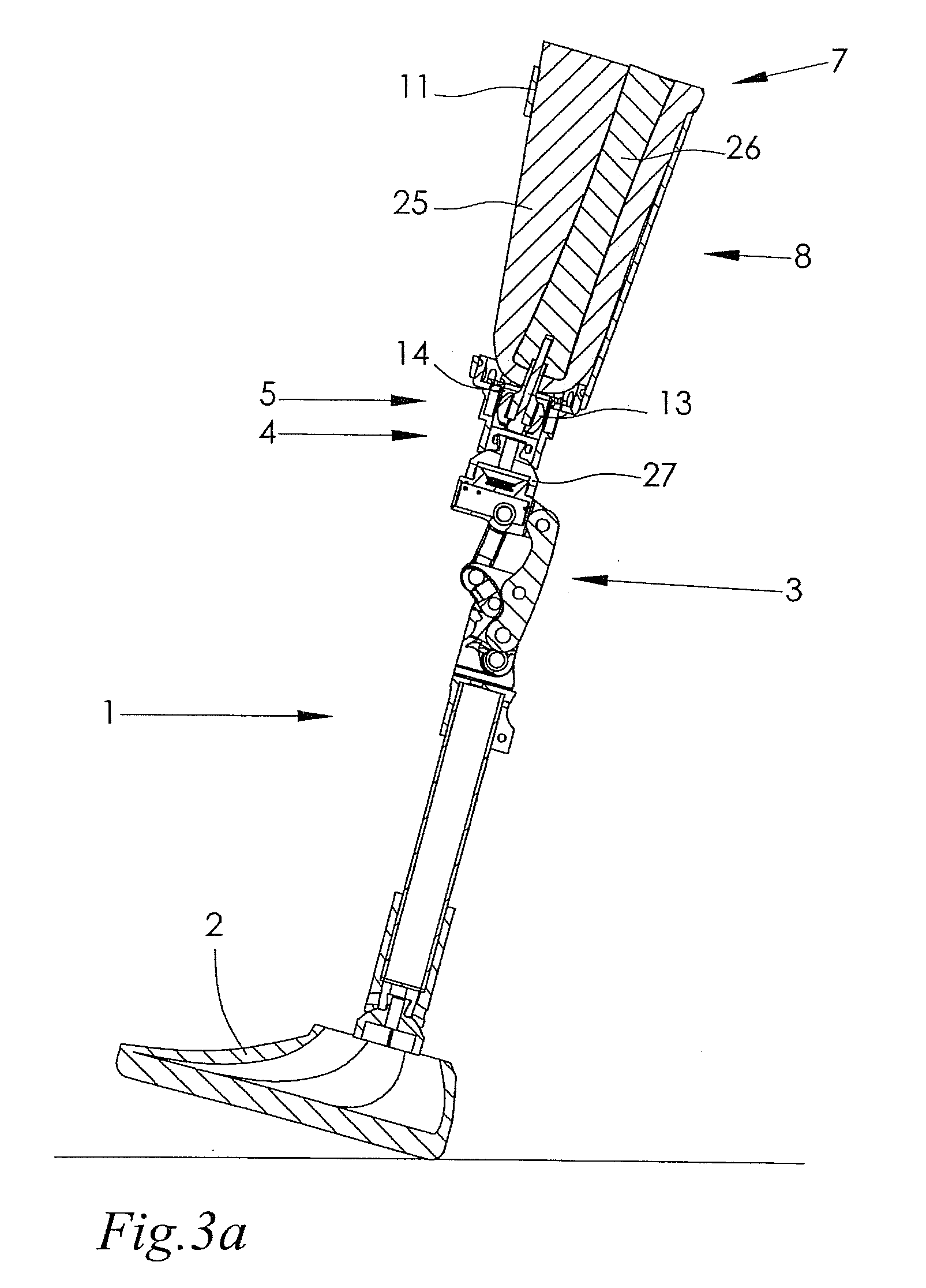Osseonitegrated limb prosthesis
a limb prosthesis and osseonite technology, applied in the field of osseonitegration, can solve the problems of inability to achieve the so-called pumping effect, wear and damage of tissues, and inability to move between soft tissues and the bones of the user's stump
- Summary
- Abstract
- Description
- Claims
- Application Information
AI Technical Summary
Benefits of technology
Problems solved by technology
Method used
Image
Examples
Embodiment Construction
[0033]FIG. 1 shows an above knee amputation comprising a leg prosthesis 1, comprising a prosthetic foot 2, a prosthetic knee 3 and various adjustable connecting couplings. The prosthetic knee shown in the drawings is of a type disclosed in U.S. Pat. No. 6,808,540 and will not be further described. A prosthetic member 4, which according to FIG. 1 constitutes a part of the upper leg prosthesis is via coupling means 5 connected to an implant 6 in the form of an osseointegrated shaft, for example a titanium screw. The implant 6 is integrated into the skeleton of an amputated stump 7.
[0034]The stump 7 is held in a socket 8, which in a manner described more in detail below will relieve the implant 6 from at least part of the bending and / or rotational forces exerted to the prosthetic member 4. Such forces will instead be transferred via the socket 8, which acts as a force transmitting device. The socket 8 has one end portion 9 secured to a connector sleeve 10 of the prosthetic member 4 and...
PUM
 Login to View More
Login to View More Abstract
Description
Claims
Application Information
 Login to View More
Login to View More - R&D
- Intellectual Property
- Life Sciences
- Materials
- Tech Scout
- Unparalleled Data Quality
- Higher Quality Content
- 60% Fewer Hallucinations
Browse by: Latest US Patents, China's latest patents, Technical Efficacy Thesaurus, Application Domain, Technology Topic, Popular Technical Reports.
© 2025 PatSnap. All rights reserved.Legal|Privacy policy|Modern Slavery Act Transparency Statement|Sitemap|About US| Contact US: help@patsnap.com



